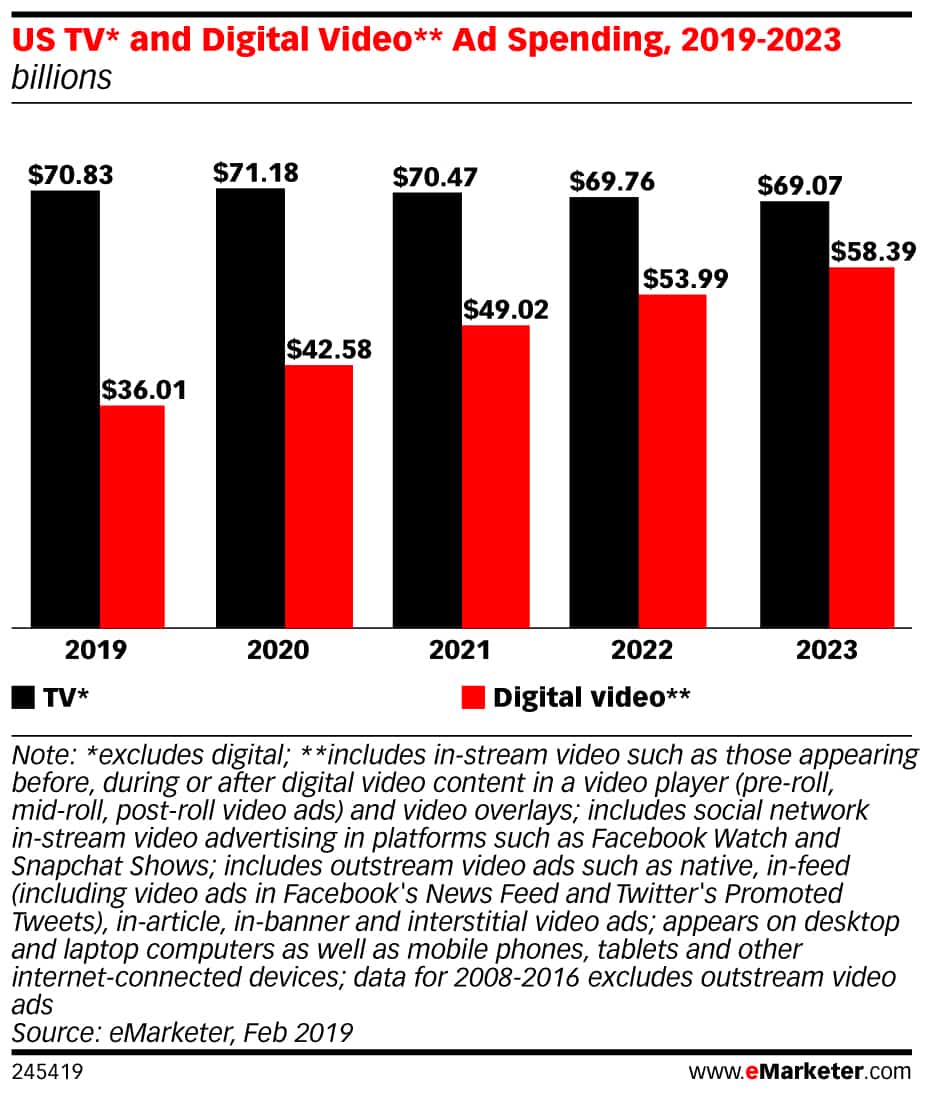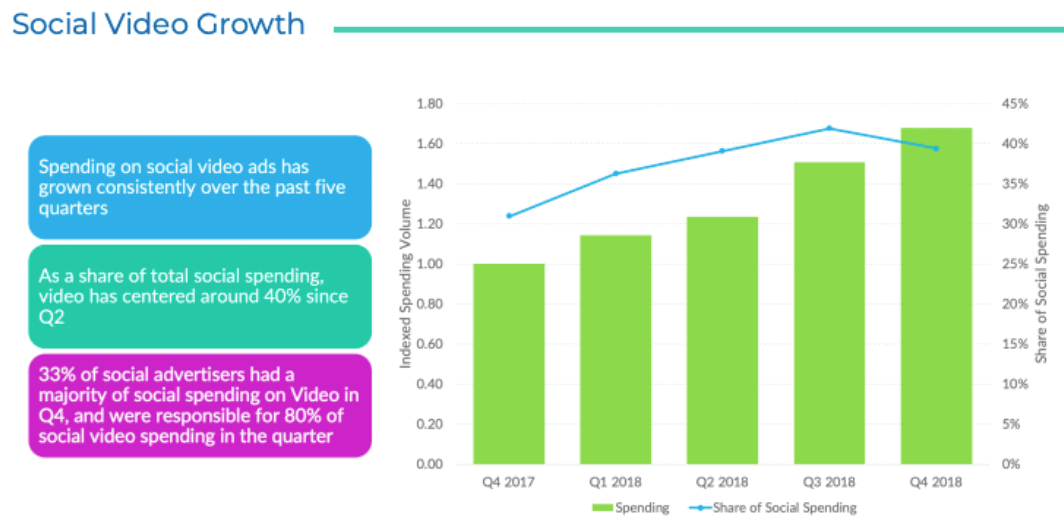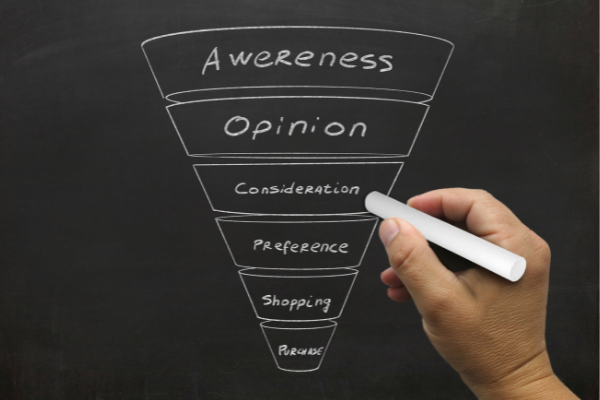That video advertising is here to stay is not news. The fact that it’s approaching the level of television advertising is staggering if you really think about it.
According to eMarketer, TV spend outpaces that of digital video by nearly two to one right now, but that gap is projected to close considerably by 2023. In just four years, digital video advertising spending will surge more than 60%, while TV ad spend will tick down slightly from where it is today.

Social Video is growing as a percentage of total social advertising budgets
One of the main channels where video ads proliferate is social. Facebook, Instagram, Twitter, LinkedIn, and Pinterest have all beefed up their video ad capabilities in the last year to better support this format. And it’s now easier and cheaper than ever to create compelling video ads.
As reported in January in our Q4 2018 Quarterly Trends Report, for some time now, the rise of online video advertising has been linked to the increased marketer investment in Social. That trend continued with a 62% year-over-year increase in social video ads in Q4 2018. The
quarter also represented the fifth consecutive quarter that social video spending increased.

Video advertising stats you should know
Here are some additional stats to keep in mind when it comes to video advertising on social media:
- Social media video ads are short. Facebook recommends keeping ads to no longer than 15 seconds. Instagram and Snapchat limit ads to 10 seconds.
- You have five seconds to grab attention. Marketers need to front load video ads with brand messages or a call to action or risk losing their audience.
- You’ll reach younger consumers with digital. According to Nielsen data, combining TV and digital video advertising improved reach by 18% among viewers 18-34, and 16% among viewers 35-49.
- Communicate without sound. Multiple publishers assert that up to 85% of their visitors watch video without sound. This can be tricky when Facebook data shows that 76% of video ads need sound to be understood.
- Video ads increase interest. A Facebook survey revealed that 62% of consumers were more interested in a brand or product after seeing it in a Story. More than 50% shared that they make more online purchases as a result of Stories.






